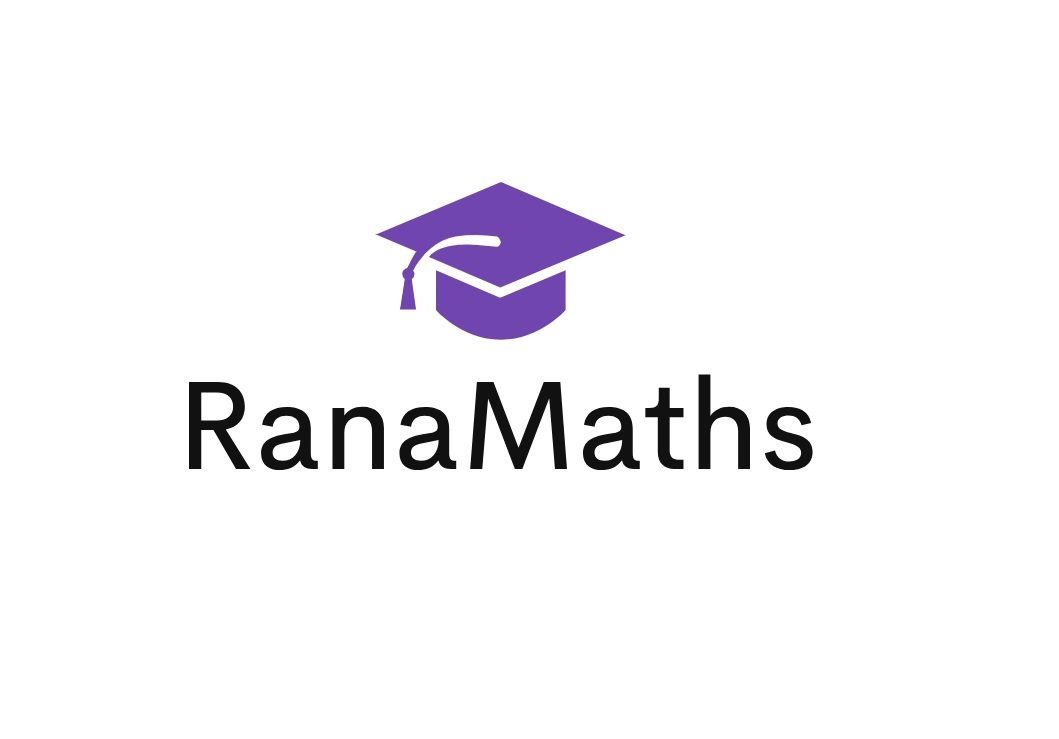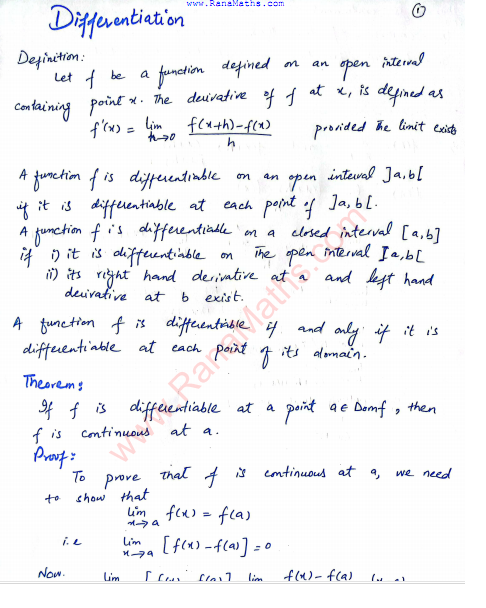Calculus and Analytical Geometry Lecture No. 5
In these notes, Calculus 1 at the undergraduate level is well discussed. These notes are handwritten notes; if you find any mistakes, please comment below in the comment section. Federal Urdu University, Islamabad.
We invite you to continue exploring our website at www.RanaMaths.com
Differentiation
Differentiation is a mathematical process that involves finding the rate at which a quantity changes. In calculus, it refers to the computation of derivatives, which represent the instantaneous rate of change of a function with respect to its independent variable.
- Derivative: The derivative of a function f(x) with respect to x is denoted by f′(x) or dx/df. It represents the rate at which the function is changing at any given point.
- Tangent Line: The derivative at a specific point also gives the slope of the tangent line to the graph of the function at that point.
- Rules of Differentiation: There are various rules and techniques for finding derivatives. These rules allow for the differentiation of more complex functions.
The process of differentiation is fundamental in various fields, including physics, engineering, economics, and computer science.
Calculus
- Differential Calculus: Focuses on the concept of a derivative, which measures how a function changes as its input changes.
- Integral Calculus: Concerned with the concept of integration, which is essentially finding the accumulation of quantities.
- Analytical Geometry:
- Coordinate Geometry: Also known as Cartesian geometry, it involves representing geometric figures using coordinate systems.This allows for the algebraic representation of geometric shapes and the application of algebraic methods to solve geometric problems.
- Vectors and Vector Geometry: Vectors are quantities that have both magnitude and direction. Analytical geometry uses vectors to study geometric objects and relationships. Vector operations, such as addition, subtraction, and dot products, are essential tools.
Continuity:
In mathematics, continuity is a fundamental concept that describes the smooth and unbroken nature of a function over its domain.
- f(c) is defined
- The limit of f(x) as x approaches c exists. The limx→cf(x) must exist. This means that as x gets arbitrarily close to c, the values of f(x) approach a finite limit.
- The limit of f(x) as x approaches c is equal to f(c): limx→cf(x)=f(c)
Extreme Value Theorem
The Extreme Value Theorem is a mathematical principle that states, in simple terms, that if a real-valued function is continuous on a closed and bounded interval, then the function attains both its maximum and minimum values at some point within that interval. In other words, a continuous function on a finite interval will reach its highest and lowest points somewhere within that interval. This theorem is valuable in various fields, including calculus and optimization, providing insights into the behavior of functions over specific ranges.
Intermediate Value Theorem
The Intermediate Value Theorem is a mathematical concept that essentially says that if you have a continuous function over a closed interval, the function takes on every value between the values it achieves at the endpoints of the interval. In simpler terms, if you imagine a continuous curve starting at one point on the interval and ending at another, the curve must pass through every height (or y-value) in between at some point along the way. This theorem is particularly useful for understanding the behavior of continuous functions and is a fundamental tool in calculus.
Calculus and Analytical Geometry Lecture No. 5

